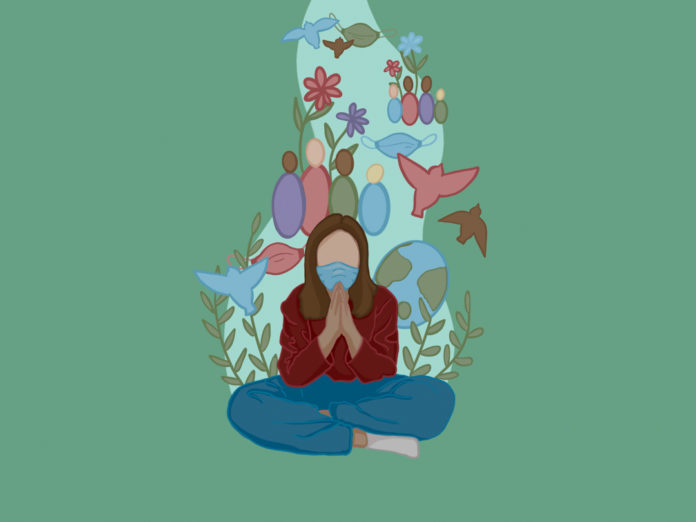As we move into the end of the year, I find myself, like many others, facing seasonal depression, which is tough all by itself without the added stress of assignments and tests.
A student’s life can be stressful at the best of times — work, school, family, socializing, the general upkeep of being alive. It can be a lot. And in these last couple of years, life has gotten harder due to COVID-19. The isolation and stress can feel overwhelming.
A lot of us struggle with self-care, so it’s more important than ever that we take the time to incorporate it into our routines. But how do we manage that when so much of regular life is turned upside down?
The answer for me became meditation. By taking the time to understand how and why my mind processes things the way it does, it’s possible for me to attend school in these wild times. And it’s not just me. Studies have shown how meditation benefits students.
The practice of meditation can be the key to mindfulness and has been shown to reduce stress for students, potentially combating the effects of various health issues and cultivating peace of mind — and it’s so simple to do that it can fit in with any lifestyle or schedule. The most important thing to remember about meditation is that it isn’t about emptying the mind; it’s actually quite the opposite. It’s about learning how your mind works. Meditation lets us see how our thoughts can take over and leave us reactive instead of proactive.
I’d like to share a simple meditative practice I’ve done for years that has gotten me through some incredibly tough times. There are many types of meditation, but this is one of the most simple kinds. It has been called vase breathing, because you visualize your lungs filling with air like you would see a vase as it is filled with water. It is also sometimes referred to as transcendental meditation, and the beautiful thing about it is that you can do it anywhere. I often use it before my classes start to be ready to absorb information, or right before a test to calm my nerves. It doesn’t take long to master, and it can change your life by aiding you in reducing stress and boosting peace of mind. All it takes are a few short steps:
- Sit somewhere comfortable.
- Start taking slow, deep breaths.
- Breath slowly in and out, following your breath down into your lungs and back out again.
And that’s all it takes! Congratulations, you are now successfully meditating.
Surprised? Let’s go over some of the steps in more detail.
How you sit doesn’t matter, as long as you are comfortable (but not so comfortable you fall asleep). Some people prefer sitting cross-legged, but sitting in a chair works just as well. I do this at my desk all the time.
Next, your breath should fill your lungs like you would fill a glass with water — from the bottom up. Imagine your breath traveling from the very bottom of your lungs and slowly filling to the top. Again, don’t make yourself uncomfortable. Most people aren’t used to breathing consciously, or this deeply, so don’t force it. Just be conscious that your breathing is deep and purposeful.
While doing this you will have intrusive thoughts. You might start thinking about dinner, homework, meeting up with friends, the dishes you need to wash, or the book you want to get back to. That’s fine. Don’t chastise yourself, and don’t try to force the thoughts away. Acknowledge them, then return your focus to your breathing. That is what meditation is about: learning to gently return our focus to one, simple place even when our mind feels like chaos.
This is a practice, so the more you do it, the better you get. But the goal isn’t something tangible. The goal is to learn that even in the middle of chaos, there can be peace. If you spend the next 80 years still gently returning your focus to your breath, then you will have achieved so much when it comes to mastering your own mind. And it won’t take long at all until you can slip into that peaceful mindfulness with a thought!
You can do this as often or as rarely as you need. Five minutes or an hour. At home, on the bus, or in the few minutes before your next class. You don’t have to close your eyes in a hidden sanctuary. Do it where you are, and when you need it. The point of this practice is that it’s available to you anywhere.
In the words of Jack Kornfield, from his Buddha’s Little Instruction Book, “If your compassion does not include yourself, it is incomplete.”
I hope this helps you find mindfulness in this stressful age of COVID-19.
Images: Brielle Quon/The Cascade


